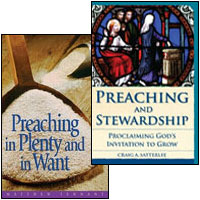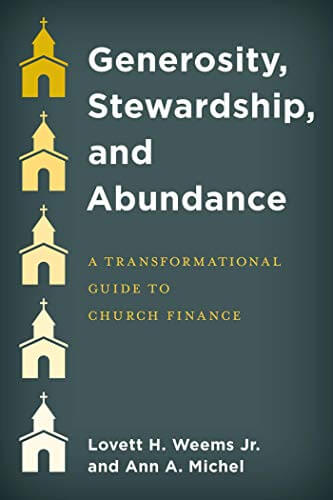How can the issue of money be addressed honestly and effectively from the pulpit? Two new books guide preachers in defining a homiletic posture that balances the theological imperatives and practical realities that can make stewardship, giving, and economic realities difficult sermon subjects.
Craig Satterlee’s Preaching and Stewardship: Proclaiming God’s Invitation to Grow (Alban, 2011) deals with preaching to encourage giving. It owns the tensions pastors face in juggling the roles of preacher and de facto development officer for their congregations. The book then addresses this dilemma by outlining a cogent, inviting theological response to the critical questions of why we should give, how we should give, and how much we should give. Satterlee reminds readers that the primary purpose of Christian preaching is always to proclaim the good news. To avoid fund-raising from the pulpit, he offers practical hints: Let Jesus do the talking. Appeal to people’s better selves. Don’t coerce or command.
Matthew Tennant’s Preaching in Plenty and in Want (Judson Press, 2011) seeks to help ministers understand how the economy — particularly the ups and downs of the business cycle — defines the context of their preaching. The book offers a “pastoral primer” on basic economic concepts, encourages preachers to incorporate economic awareness into sermon preparation, and takes on the cultural idols of affluence and conspicuous consumption.
Both books explore the deeply contextual nature of preaching and stewardship. Satterlee’s starting point is a discussion of how the concept of stewardship itself must be contextually defined based on a congregation’s theological understanding, its sense of mission, and its needs and priorities. While Tennant’s stated focus is on the economic climate as the context of preaching, he explores with pastoral sensitivity how a congregation’s social location and preexisting attitudes shape their readiness to respond to prophetic preaching on economic themes. Preaching that takes people from where they are to where God would have them be is a process, not a one-time event. Counseling patience and tenacity, his appro
ach is nuanced and gentle, but not timid.
Both books offer practical res ources, such as model sermons and scriptural citations. Preaching and Stewardship concludes with a chapter on how preaching can integrate with other stewardship strategies and an appendix pointing out where the subjects of money and giving arise in the Revised Common Lectionary. But
ources, such as model sermons and scriptural citations. Preaching and Stewardship concludes with a chapter on how preaching can integrate with other stewardship strategies and an appendix pointing out where the subjects of money and giving arise in the Revised Common Lectionary. But
perhaps most importantly, each book gives witness to an individual preacher’s search to claim an authentic, credible voice on issues of money and faith.







